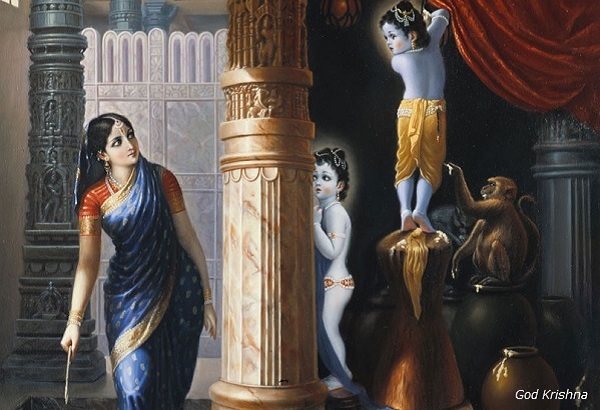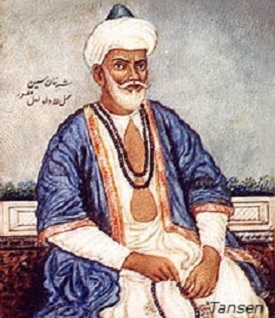
- Medieval Indian History - Home
- Kingdoms of North India
- The Rajputs
- The Invaders
- Delhi Sultanate
- The Khilji Sultans
- Tughlaq Sultans
- Lodi Sultans
- New Kingdoms
- Religion
- The Sikh Movement
- Babur’s Advent into India
- Major Battles
- Significance of Babur's Conquest
- Humayun’s Conquest
- Humayun’s Downfall
- Sur Empire
- Akbar the Great
- Early Phase of Akbar’s Reign
- Expansion of Mughal Empire
- Akbar’s Administrative System
- Akbar’s Organization of Government
- Akbar’s Relation with Neighbours
- Rebels during Mughal Empire
- Deccan & South India
- Conquest of South – I
- Conquest of South – II
- Deccan’s Cultural Contribution
- Political Development Mughals
- Nur Jahan
- Shah Jahan’s Rebel
- Mughals’ Foreign Policy
- Mansabdari System
- Social Life under the Mughals
- Nobles & Zamindars
- Trade & Commerce
- Mughals’ Cultural Developments
- Language, Literature & Music
- Religious Ideas & Beliefs
- Problems of Succession
- Aurangzeb’s Reign & Religious Policy
- North-East India
- Popular Revolts & Movements
- Rise of Maratha
- Administrative System of Shivaji
- Aurangzeb & Deccani States
- Reference and Disclaimer
Language, Literature and Music
Language
During the Mughal period, regional languages also developed due to the patronage extended to them by the local and regional rulers.
By the time of Akbar, knowledge of Persian had become so widespread in north India because Akbar dispensed with the tradition of keeping revenue records in the local language.
The tradition of keeping revenue records in the local language was also in the Deccani states till their extinction in the last quarter of the seventeenth century.
Literature
Persian prose and poetry were at climax under Akbar's reign. Abul Fazl who was a great scholar and a stylist, as well as the leading historian in the Akbars court, set a style of prose-writing which was emulated for many generations.
Faizi (brother of Abul Fazl) was the leading poet of that age. Faizi also worked for the Akbar's translation department. The translation of the Mahabharata was carried out under his supervision.
Utbi and Naziri were the two other leading Persian poets. They were migrated from Iran to India and made the Mughal court one of the cultural centers of the Islamic world. Besides, Hindus also contributed to the growth of Persian literature.
Apart from literary and historical works, a number of famous dictionaries of the Persian language were also compiled in this period.
Regional languages acquired stability and maturity, as some of the finest lyrical poetry was produced during this period.
The romance of God Krishna with Radha and the milkmaids pranks of the child Krishna and stories from Bhagawat Gita were largely in lyrical poetry and translated in many regional languages including Bengali, Oriya, Hindi, Rajasthani, and Gujarati.

Many devotional hymns to Rama were also composed and the Ramayana and the Mahabharata were translated into the regional languages.
Medieval Hindi in the Brij form, that is the dialect spoken in the neighborhood of Agra, was also patronized by the Mughal emperors and Hindu rulers. From the time of Akbar, Hindi poets began to be attached to the Mughal court.
A leading Mughal noble, Abdur Rahim Khan-i-Khana, produced a fine blend of Bhakti poetry with Persian ideas of life and human relations. Likewise, the Persian and the Hindi literary traditions began to influence each other.
Tulsidas was one of the most influential Hindi poet of the medieval period who had written Ramcharitmanas. He used a dialect of Hindi, spoken in the eastern parts of Uttar Pradesh (around Banaras).
Eknath and Tukaram developed and made the Marathi language, popular. Eknath explains if Sanskrit was made by God, was Prakrit born of thieves and knaves? Let these erring of vanity alone. God is no partisan of tongues. To him Prakrit and Sanskrit are alike. My language Marathi is worthy of expressing the highest sentiments and is rich laden with the fruits of divine knowledge.
This undoubtedly expresses the sentiments of all those writing in local languages. It also shows the confidence and the status acquired by these languages. Due to the writings of the Sikh Gurus, Punjabi received a new life.
Music

Akbar patronized Tansen (the great musician of Gwalior) who is credited with composing many new melodies (ragas).
Jahangir and Shah Jahan as well as many Mughal nobles also had given very much importance to music.
Some researchers say that Aurangzeb banished singing in his court, but not the performance of musical instruments. In fact, Aurangzeb himself was an accomplished veena (a musical instrument) player.
Music in all forms continued to be patronized by Aurangzeb's queens (in the harem) and by the nobles as well. This the reason that the largest number of books on classical Indian music (in Persian) were written during Aurangzeb's reign.